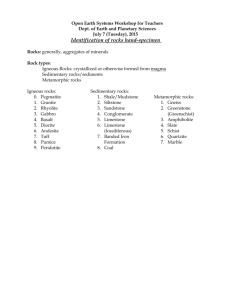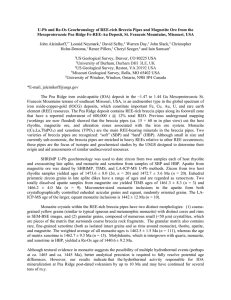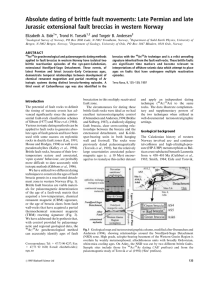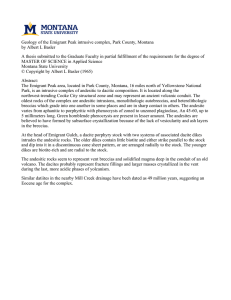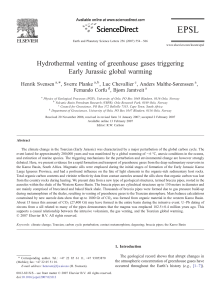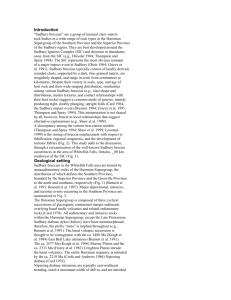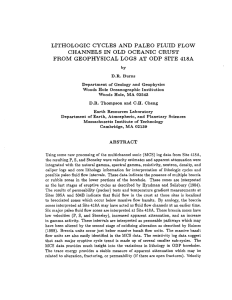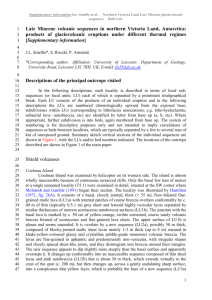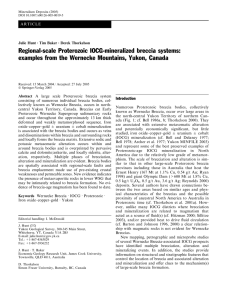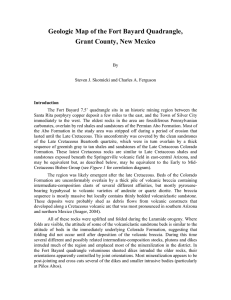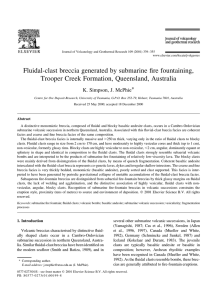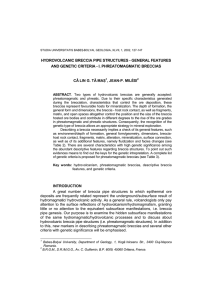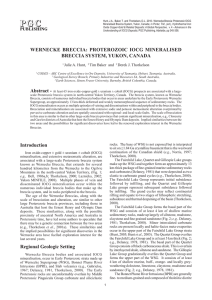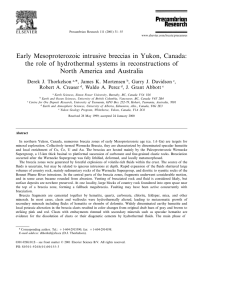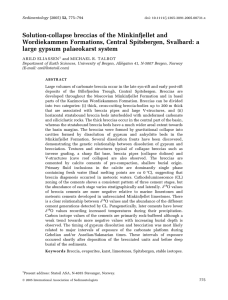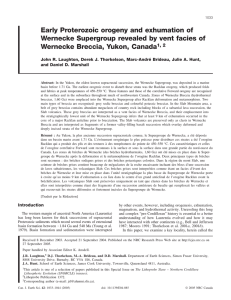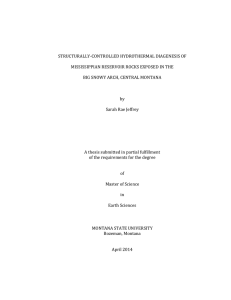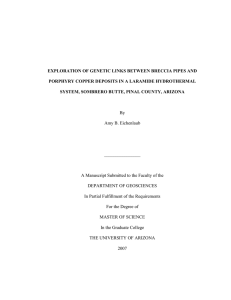Nicole Harb
advertisement
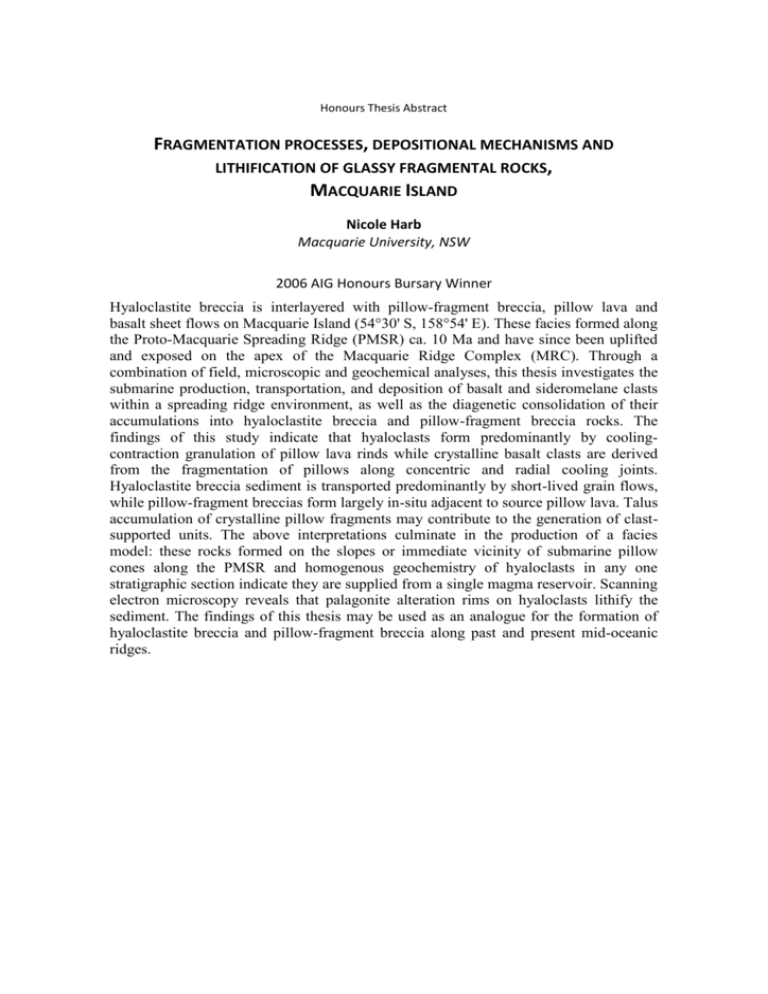
Honours Thesis Abstract FRAGMENTATION PROCESSES, DEPOSITIONAL MECHANISMS AND LITHIFICATION OF GLASSY FRAGMENTAL ROCKS, MACQUARIE ISLAND Nicole Harb Macquarie University, NSW 2006 AIG Honours Bursary Winner Hyaloclastite breccia is interlayered with pillow-fragment breccia, pillow lava and basalt sheet flows on Macquarie Island (54°30' S, 158°54' E). These facies formed along the Proto-Macquarie Spreading Ridge (PMSR) ca. 10 Ma and have since been uplifted and exposed on the apex of the Macquarie Ridge Complex (MRC). Through a combination of field, microscopic and geochemical analyses, this thesis investigates the submarine production, transportation, and deposition of basalt and sideromelane clasts within a spreading ridge environment, as well as the diagenetic consolidation of their accumulations into hyaloclastite breccia and pillow-fragment breccia rocks. The findings of this study indicate that hyaloclasts form predominantly by coolingcontraction granulation of pillow lava rinds while crystalline basalt clasts are derived from the fragmentation of pillows along concentric and radial cooling joints. Hyaloclastite breccia sediment is transported predominantly by short-lived grain flows, while pillow-fragment breccias form largely in-situ adjacent to source pillow lava. Talus accumulation of crystalline pillow fragments may contribute to the generation of clastsupported units. The above interpretations culminate in the production of a facies model: these rocks formed on the slopes or immediate vicinity of submarine pillow cones along the PMSR and homogenous geochemistry of hyaloclasts in any one stratigraphic section indicate they are supplied from a single magma reservoir. Scanning electron microscopy reveals that palagonite alteration rims on hyaloclasts lithify the sediment. The findings of this thesis may be used as an analogue for the formation of hyaloclastite breccia and pillow-fragment breccia along past and present mid-oceanic ridges.


